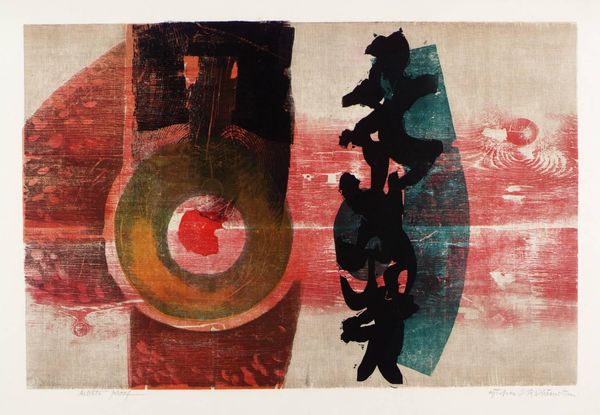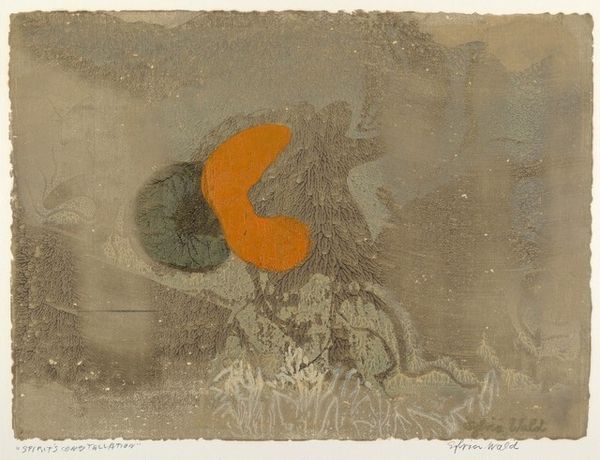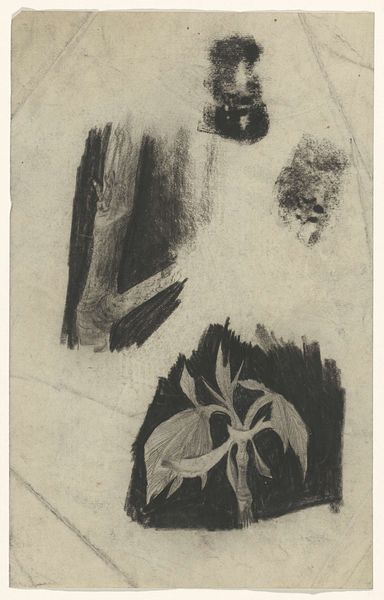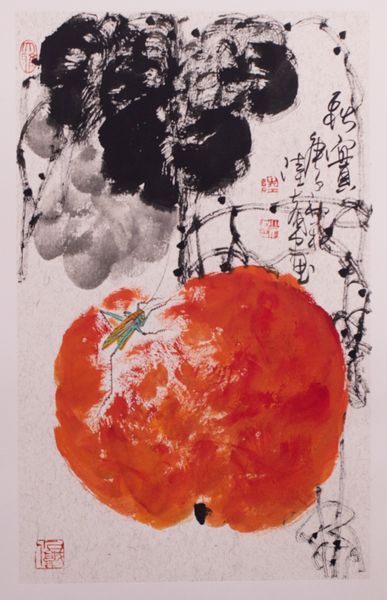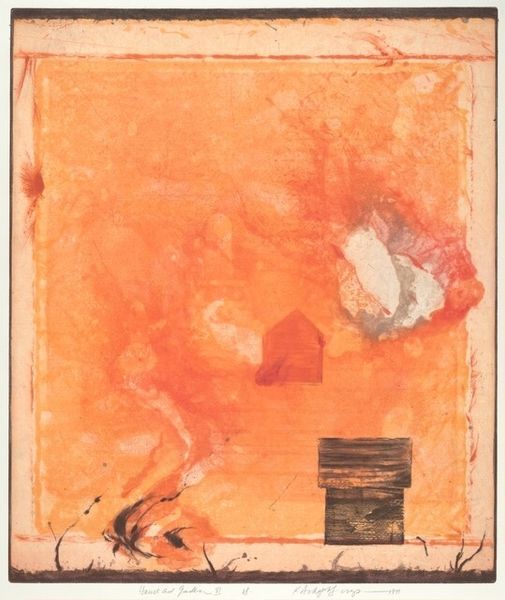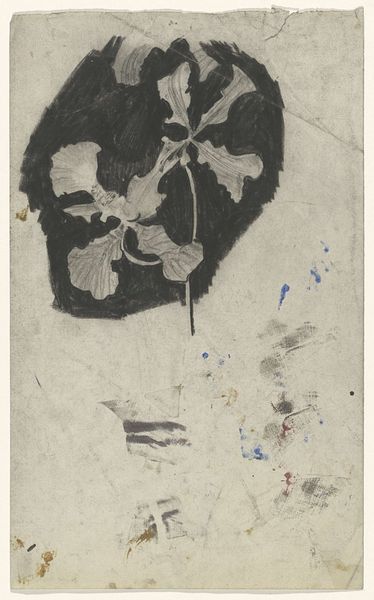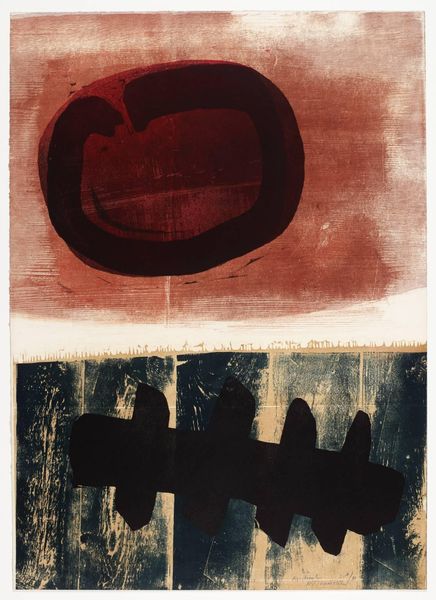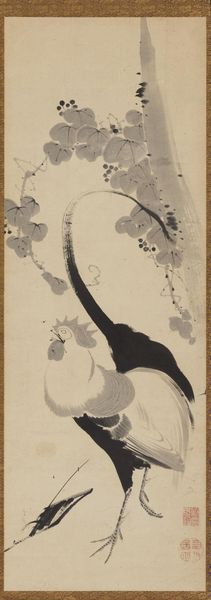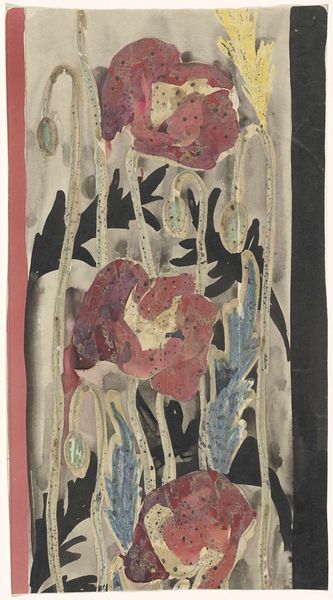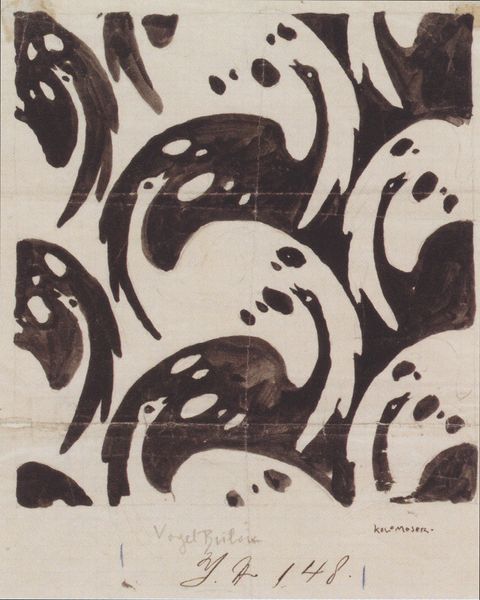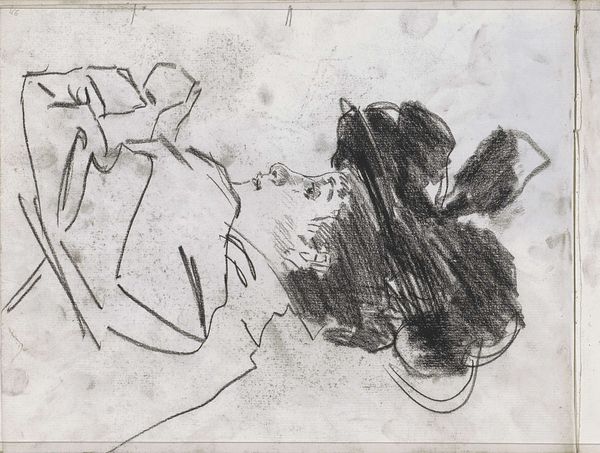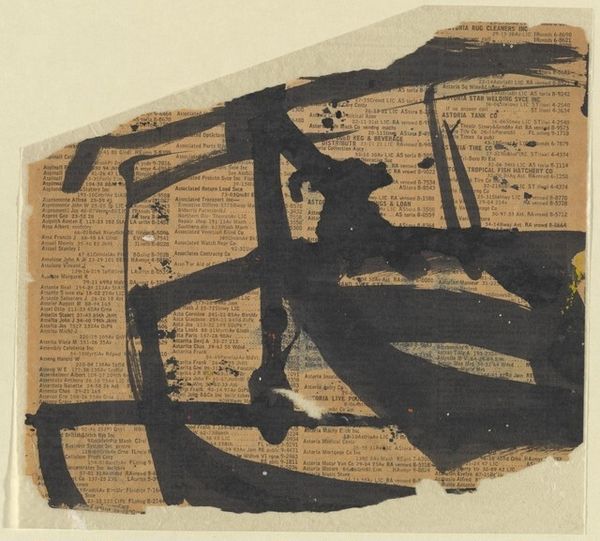
print, woodcut
#
organic
# print
#
asian-art
#
landscape
#
folk-art
#
woodcut
#
abstraction
#
line
#
mixed media
Copyright: Public domain Japan
Curator: Standing before us is "Night Perfume," a woodcut print created by Kaoru Kawano in 1950. It showcases abstracted floral forms against a warm, textured background. Editor: My immediate impression is one of stark contrast. The boldness of the black shapes really jumps out against that subtly mottled backdrop. It feels simultaneously modern and somehow ancient. Curator: It’s interesting you mention 'ancient.' Kawano was part of the Sosaku-hanga movement, which emphasized the artist's complete involvement in the printmaking process—drawing, carving, and printing. This hands-on approach aligned them with folk art traditions, despite also engaging with modernist abstraction. Editor: Ah, so it's not just a product of aesthetic choice, but speaks to a whole philosophy of artistic creation. That idea of complete artistic control, of connecting directly to the material, is vital. What about the iconography—what meaning can we draw from these shapes? Curator: I see the flower forms, obviously, perhaps alluding to ephemerality or beauty in the darkness. Notice how Kawano uses the wood grain to evoke a tactile quality; a rough sensuality in contrast to the potentially delicate connotations of flowers. The single dark bloom dominates the image. Editor: That bold black—it carries so much symbolic weight. Is it death, mourning, or is there a cyclical sense? Is it connected to postwar anxieties, of shadow in the midst of recovery? This imagery feels especially poignant given Japan's postwar atmosphere in the 1950s. Curator: Indeed, the limitations of printmaking, particularly the specific character imparted by wood, become inseparable from the emotional tenor. The rough-hewn quality mirrors a struggle, but perhaps also the determination to create something new. The tension itself communicates. Editor: Yes! The tension embodies so much more than simple aesthetic contrast; there is material significance intertwined with an intensely subjective expressiveness, born out of social conditions. It’s as if Kawano distilled the very essence of an era. Curator: I leave with a stronger appreciation of printmaking, not simply as a medium, but as an active contributor to meaning. Thank you. Editor: Agreed. I see it now not just as flowers but as embodying cultural memory and resilience. The imagery takes on another dimension.
Comments
No comments
Be the first to comment and join the conversation on the ultimate creative platform.
